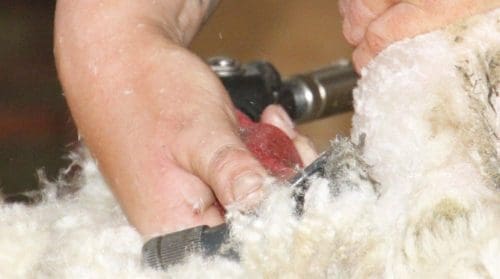A DRAMATIC drop in Australia’s forecast wool production and shorn sheep numbers next year is expected to put pressure on industry strategy and levy spending plans.

The Australian Wool Production Forecasting Committee today forecast that in 2024/25 the country will produce 279.4 million kilograms of wool and shear 63.2 million sheep, the lowest figure since 1903 when the national flock was 54 million.
The committee’s third 2024/25 clip forecast is 12 percent down on its 2023/24 estimate, and 6Mkg lower than the August 2024 forecast,. The latest national forecast follows predictions of lower shorn wool production in all states.
Committee chairman Stephen Hill said wool producers are making decisions regarding their enterprise mix due commodity prices, input costs and other external factors.
“Together with variable seasonal conditions, these decisions are pointing towards structural change in the wool industry evident in declining numbers of sheep shorn and consequently shorn wool production,” he said.

Time to consider a full industry restructure – WPA
WoolProducers Australia general manager Adam Dawes said there was a critical need to consider a full industry restructure – not just a review of Australian Wool Innovation priorities.
“The current structures were set when the clip was almost four times the size of what the AWPFC has estimated.
“With current volumes and process the industry (as a whole) needs a complete overhaul,” he said.
“Doing the same thing and expecting things to get better will only speed up the race to the bottom.”
Mr Dawes said the current trends were being driven by profitability decisions by farmers, and wool is losing out.
“Clearly – as analysed by the likes of Mecardo and Episode 3 – AWI spending money on marketing has little to no impact on wool piece.
“The other half of the profitability equation is cost of production, we can influence this and the Agrista report confirmed that opportunities exist in this regard,” Mr Dawes said.
“With this situation we have to give serious consideration to investing in the factors over which we have control and the ability to improve the profitability of growers.
“If the current trends in price and production volumes continue AWI (and the Australian wool industry) we will continue to lose wool growers to other enterprises and the existential crisis that the industry faces will only grow,” he said.
 “With this, it is prudent that every dollar spent provides a directly measurable positive return to growers (i.e. improved profitability).”
“With this, it is prudent that every dollar spent provides a directly measurable positive return to growers (i.e. improved profitability).”
AWI expects cuts in the millions
An Australian Wool Innovation spokesperson said the forecast fall in wool production was bad news for the Australian wool industry.
“Since AWI’s funding is tied to both production and price levels, AWI’s revenue will fall further as well.
“AWI’s budgeting process for 2025/26 has already begun and based on the latest forecast millions more in savings will have to be made,” the spokesperson said.
“The process of industry consultation will not change.
“The Woolgrowers Consultation group and Wool Industry Consultation Panel will meet on February 11 and 12 in Sydney to discuss their priorities and contribute to the work AWI has already undertaken in this regard.”
The spokesperson said the drop in production nationally will create knock on effects for processors.
“The best thing the processors can do is to increase the demand for wool which would then flow through to higher prices for wool growers.”
Slaughter, cut per head and testing volumes
The Australian Wool Production Forecasting Committee said sheep slaughter from July to September 2024 is up 28pc compared with same time in 2023 and is 66pc above the five-year July to September average.
Average wool cut per head is forecast to be comparable with 2023/24, at 4.42 kg greasy (down 0.5pc). AWTA key test data for the 2024/25 season to the end of November show small year-on-year changes in mean fibre diameter (down 0.3 microns), staple length (up 0.5mm), staple strength (down 0.5 N/ktex), yield (down 1pc) and vegetable matter (down 0.3pc).
New South Wales is forecast to produce 110.5 Mkg greasy wool (down 7.5pc), Victoria 55.9 Mkg greasy (down 14.8pc), South Australia 50.3 Mkg greasy (down 13.3pc) and Western Australia 44.7 Mkg greasy (down 18.8pc). Queensland and Tasmania are forecast to producer 9.7 and 8.3 Mkg greasy respectively (down 4 and 10.8pc).
AWTA wool test volume for the 2024/25 season to the end of November were down by 9.9pc on a year-on-year basis. The number of first-hand offered wool bales at auction during 2024/25 to end of November was down by 17pc.

How many stud breeder groups does it take to change a light bulb?
AWI says “the process of industry consultation will not change”. 28 groups to drown out WoolProducers?
Surprised to see they missed the CWA and Men’s Shed, but then they would probably suggest some sensible things.
Wool industry gets smaller and the consultation panel gets bigger?
AWI has spent the buffer money. Their income looks like halving. The whole industry will disappear, like the automobile industry in Australia.
All in line with Labor government direction.